Curvature of the nasal septum is a common pathology that can lead to serious complications in the absence of effective therapy. The defect is corrected by performing an operation. Modern methods of septoplasty are able to restore the correct shape to the tissues of the nasal septum in a short time.
The structure and function of the nasal septum
The nasal passages are separated by a plate. In front, the septum has a quadrangular shape and consists of cartilage tissue. Below is the hard palate, behind the ethmoid and sphenoid bones, and in the upper part - the frontal bone.
The nose has a number of important functions:
- filtration of inhaled air;
- maintaining the optimal level of its humidity;
- warming;
- odor recognition.
Violation of the structure of the plate can lead to partial or complete loss of some of them.
Causes of the curvature of the nasal septum
The complex structure of the partition makes it vulnerable and easily deformable.
The main reasons for the violation of the shape of the plate can be:
- Injury. Half of the cases are associated with injuries to the face of the skull or nose. Most often, injuries occur at a young age. Deformity in a newborn may be the result of illiterate manipulation by a midwife, too fast movement along the birth canal.
- Inconsistency of bone growth in the facial part of the skull. This pathology is present in 30% of patients. Uneven development of parts of the nose violates its symmetry.
- Diseases - tumors, polyps, proliferation of the nasal concha. Chronic rhinitis can also be the cause - a person breathes air in only one of the nasal passages, which leads to deformation.
- Hereditary predisposition.
- Hypertrophy of the vomer-nasal organ, in which the olfactory cells are located. Normally, it is atrophied, but in some cases it can increase, provoking a curvature.
Types and types of curvature of the nasal septum
Curvature of the nasal septum (the operation depends on the type of injury) can be of different degrees:
- 1st group - a slight bias from the center;
- 2nd group - the projection of the partition is located in the middle between the side wall and the central line;
- Group 3 - the curved plate touches the side wall.
There is also a more detailed classification, taking into account morphological, pathogenetic and clinical features:
- A one-sided ridge vertically located deep in the nasal cavity.
- Two protrusions located in a vertical plane on opposite sides of the partition (S-shaped bend).
- A small ridge in the front of the nose that does not impede free breathing.
- Crumpled plate with many fracture lines.
- Pronounced protrusion in the anterior part of the septum, the lower edge of the cartilaginous quadrangle is shifted back. Breathing is impaired.
- An ascending ridge, shaped like a saber, located almost horizontally on one side.
- Two nearly horizontal projections opposite each other on the front of the nose and in the middle section. There is a characteristic groove on one side.
In addition to the listed types, multi-splintered nose deformities can be distinguished, when the fragments of the septum are superimposed on one another at different angles.
Symptoms of the curvature of the nasal septum
The curvature of the nasal septum (the operation is important because of the strong narrowing of the nasal passage) makes it difficult for air to pass, the number of cilia on the ciliated epithelium decreases, which negatively affects the natural protection and cleansing of the mucous membrane. Lack of oxygen affects the activity of the whole organism.
Most often, patients note the following signs of deformity:
- Respiratory distress, manifested in nasal congestion, the appearance of mucous discharge, sometimes with an admixture of pus, a feeling of dryness. The symptom may affect only one side.
- Chronic inflammatory diseases of the sinuses (sinusitis).
- Tendency to respiratory infections.
- Nosebleeds.
- Vasomotor rhinitis associated with the proliferation of the vascular network.
- Soreness in the face.
- Breathing accompanied by noise, snoring.
- Discomfort in the nose, itching, swelling of the mucous membrane.
- A deviated nasal septum often touches the trigeminal nerve, irritating it. This provokes regular migraines, respiratory tract spasms, chronic cough, sneezing.
- Fatigue, depression, decreased ability to concentrate and remember due to oxygen starvation. Children may have developmental delays, both physically and mentally.
- Forced inhalation through the mouth leads to chronic pharyngitis, bad breath, and dry mouth. The air does not pass purification and does not warm up, which poses a danger to the lower respiratory tract. The likelihood of developing bronchitis, pneumonia increases.

 Don't miss the most popular column article: Cannula - what is it, how is it used in cosmetology and medicine.
Don't miss the most popular column article: Cannula - what is it, how is it used in cosmetology and medicine.Indications for surgery
The reason for contacting the surgeon may be:
- Frequent discharge of blood from the nose.
- Uncomfortable breathing noise and snoring for the patient.
- Prone to colds.
- Headaches.
- Swelling of the mucous membrane.
- Sinusitis, allergic rhinitis.
Preparatory stage
To clarify the diagnosis, you must consult an otolaryngologist.
Inspection may include:
- Assessment of the appearance of the nose. This stage allows you to identify serious deformations.
- Checking the strength of inhalation and exhalation through each of the nostrils and the ability to smell.
- Rhinoscopy - examination of the nasal cavity using special equipment. To do this, a dilator is inserted into the nostrils, and the mucous membrane is probed with a thin probe to assess the presence of tumors, abscesses, polyps. When penetrating through the oral cavity, it is possible to detect hypertrophy of the posterior side of the turbinate.
- Endoscopy, implying a more detailed study of the mucous membrane, is performed using local anesthesia. Through a probe with a video camera, you can clearly see the lower shell.
- Computed tomography, showing the presence of spikes and ridges on the partition.
Before the operation, you must:
- men shave;
- stop drinking alcoholic beverages and smoking;
- do not take medications affecting the rate of blood clotting.
A number of tests should be taken two weeks before surgery:
- blood for syphilis, human immunodeficiency virus, viral hepatitis;
- determination of the Rh factor and blood group;
- fibrinogen concentration, platelets, coagulation level;
- urine analysis for the presence of protein, sediment composition;
- blood test - leukocyte formula, hemoglobin, leukocytes, erythrocytes and platelets.
Anesthesia
Depending on the location of the deformed area, local or general anesthesia is used:
- Local anesthesia acceptable if the curvature does not touch the bone tissue. The mucous membrane is moistened with a solution that removes sensitivity using a spray bottle or tampons.
- General anesthesia. In children and patients with deformation of bone structures, the operation is performed in a state of anesthetic sleep.
Surgical treatment methods
Septoplasty is performed using several methods. The choice of this or that method depends on the type of deformity, as well as on the policy of the clinic in which the patient is observed.
Operation Killian
It does not require incisions on the skin, therefore it excludes the formation of scars. Using a small scalpel, incisions are made in the perichondrium and mucous membrane on both sides in turn. An anesthetic is injected under the perichondrium, and through the incisions made, the shell is shifted to the desired position.
If there are spines or ridges, detachment is done only around them so as not to disrupt the structure of the mucous membrane above the protrusions. After that, the septum is straightened by a mechanical method, the elevations are cut off and the deformed areas are excised.
The aligned nasal septum is fixed with tampons, pressing the mucous membrane to the bones and cartilage. A sling bandage is often recommended.
Septal redress
A scalpel is used to cut the mucous membrane and perichondrium in one of the nasal passages. The separation is done only from the side of the incision. From the same edge, the cartilage is dissected in four places so that its deformed part is connected only with the perichondrium, mucous membrane, and also with the periosteum of the second nasal passage.
After that, the septum is incised at the site of the curvature of its base. After that, the nasal septum becomes mobile and takes its natural position, in which it is fixed with tampons.
Septum mobilization
The nasal septum is fractured in several places using special surgical instruments. After that, the fragments are stabilized and the plate is straightened.
Mucosal dissection is not required in most cases. If it becomes necessary to make incisions, they are sutured with a self-absorbable suture material - catgut.
Circular resection
If, after mobilization, the quadrangular cartilage has not acquired sufficient mobility and the septum has not straightened, a circular incision is made, and a thin layer of cartilage is cut around the quadrilateral. After this, the bone base of the septum is redressed.
Partial resection
One nasal passage is operated on. The mucosa is dissected to the cartilage along almost the entire length of the septum. The membrane is separated from the perichondrium with a special tool. Through the resulting incision, the cartilage is dissected so that it becomes possible to separate it from the mucous membrane on the opposite side.
After that, the deformed part of the septum is removed with scissors, and the mucous membrane is put in place and fixed with tampons. If the bleeding is profuse, the tampons are soaked with a hemostatic compound.
Resection-reimplantation
Recognized as the most advanced septoplasty technique. The deformed cartilage plate is cut with a metal knife.
After that, the pieces are flattened with a special device, giving them the correct shape, returned to their original place and fixed.
Laser septoplasty
The curvature of the nasal septum (an operation performed with a laser) is eliminated by the surgeon using equipment that allows you to adjust the depth of penetration of radiation into the tissue.
Blood is practically not released in the process, since the laser "seals" the damaged vessels. Cartilage tissue that breaks the shape of the septum is evaporated, after which the plate is fixed with a plaster bandage and gauze tampons.
The advantages of this technique:
- antiseptic effect;
- stimulation of tissue regeneration and immunity;
- bloodlessness;
- minimal trauma;
- short recovery period.
Endoscopic septoplasty
Refers to low-traumatic, gentle methods. The resection is performed inside the nose on the mucous membrane to prevent scarring on the facial skin. The duration of the operation is 30-40 minutes.
In the process of detachment of the mucous membrane, its integrity is preserved, with the exception of injuries in which the damaged areas must be removed to give the septum a vertical position.

 Don't miss the most popular column article: Alentova Vera after plastic surgery - the last photos, what operations were performed, how the star changed.
Don't miss the most popular column article: Alentova Vera after plastic surgery - the last photos, what operations were performed, how the star changed.Rehabilitation
After the end of the operation, tampons with antibacterial and hemostatic compounds are placed in the nose for a day. If the operated area continues to bleed, the used tampons are replaced with new ones and left for another 1 day. If necessary, the nose is additionally fixed with a gel bandage. During this period, you have to breathe through your mouth.
The following symptoms may occur:
- pain in the upper jaw;
- migraine;
- dry mouth and thirst;
- increased body temperature;
- dizziness, loss of energy, drowsiness.
During the rehabilitation period, doctors recommend taking antibiotics, hemostatic medications, and pain-relieving drugs.
For successful tissue healing it is necessary:
- drink not too hot drinks;
- do not take a heating bath or hot shower;
- do not blow your nose with effort;
- after removing the tampons, rinse the nasal passages every day with antiseptic and saline solutions;
- within a month after the operation, one should refrain from going to the bathhouse, heavy physical exertion, and drinking alcohol.
Usually, the first 5-6 days after the septum is corrected, patients spend in the hospital, but discharge is possible already on the second day after removing the hemostatic tampons, subject to a daily visit to the doctor.
Free breathing is not restored immediately; at first, edema persists in the nasal passages. For most patients, the ability to breathe and smell fully returns after 7 days, but for some it takes a month to recover.
Video when you need to do the operation:
Complications
Curvature of the nasal septum (the operation to correct it is quite simple) is rarely accompanied by complications.
Unpleasant symptoms during the rehabilitation period can manifest themselves in this way:
- bloody nasal discharge;
- poor sense of smell;
- hematoma - a cavity filled with blood between the mucous membrane and cartilage or bone tissue;
- inflamed abscesses;
- unnatural, sinking shape of the nasal bridge;
- adhesions in the nose;
- chronic sinusitis;
- the opening connecting the nasal passages.
Contraindications for surgical treatment
Septoplasty is prohibited in the following cases:
- The presence of a concomitant inflammatory process in an acute form or in an exacerbated chronic one.
- Coagulopathy is a blood clotting disorder.
- Tuberculosis of the lungs and upper respiratory tract.
- Menstrual bleeding and the first week after.
Curvature of the nasal septum should not be done with menstrual bleeding and the first week after it. The operation is done later. - Atrophic changes in the epithelium of the nasal septum.
- Psychical deviations.
- Decompensation of somatic pathologies.
- The patient's age is over 50 years old or under 16-18 years old.
Can nasal septum curvature be treated without surgery?
There are no reliable techniques to align the septum without resorting to surgery. Using alternative methods aimed at alleviating the symptoms of deformity, but it is important to consult experienced professionals so as not to aggravate the situation.
The most widespread among the opponents of the operation were the following methods:
| Method name | Description |
| "Butterfly" | This is a plastic clip that attaches to the back of the nose. The duration of treatment is several hours a day. The device is used to narrow and straighten the cartilaginous dorsum of the nose. A side effect may occur - stagnation of mucus in the sinuses and the development of sinusitis. |
| Osteopathy | Manual effect on cartilage and facial bones. Some experts argue that this can achieve full straightening of the septum. It is important to remember that this type of correction is not acceptable for all types of deformities, and in order to get a noticeable result, you will have to undergo a long course of treatment. |
| Conservative tactics | It helps if the cause of the curvature is polyps, severe edema of the maxillary sinus and other pathologies of the nasopharynx. With the disappearance of provoking factors, the septum partially or completely moves into place. To monitor the result, an x-ray should be taken 2-3 months after the completion of treatment. |
Is it possible to prevent the curvature of the nasal septum?
In order to prevent deformation of the central nose plate, it is necessary:
- timely treat ENT diseases;
- avoid traumatic activities;
- strengthen immunity.

 Don't miss the most popular column article: How and why ribs are removed - efficiency, photos before and after surgery.
Don't miss the most popular column article: How and why ribs are removed - efficiency, photos before and after surgery.What operations is the alignment of the nasal septum combined with?
For the parallel disposal of concomitant pathologies, it is possible to combine septoplasty with other operations:
- removal of foreign objects and polyps;
- lower conchotomy - correction of an enlarged turbinate in the chronic course of rhinitis;
- sinusotomy - elimination of congestion in the paranasal sinuses;
- external plastic of the nose.
Where can you get the operation and how much does it cost?
The total cost of septoplasty is calculated depending on several factors:
- types of surgical intervention;
- type of anesthesia;
- the degree of deformation of the nose;
- the list of measures aimed at restoration.
The curvature of the nasal septum can be corrected free of charge by contacting the clinic at the place of registration. The ENT will write out a referral to the regional hospital, where it will be necessary to queue up and pass all the required tests. After a while, an invitation for an operation will follow.
The disadvantage of this path is the impossibility of choosing a surgeon on your own. The specialist may turn out to be a beginner, although interns are usually supervised by more experienced doctors.
The cost of a standard operation, which also includes a hospital stay, is about 20,000 - 100,000 rubles. Often the price is increased by the use of wave scalpels, but given the minimum size of the incisions, the use of expensive equipment may not be justified.
Prices for laser septoplasty vary from 30,000 to 40,000 rubles.
The operation, correcting the curvature of the nasal septum, as well as the rehabilitation period, under the supervision of a qualified specialist, are carried out without serious complications. If indicated, you should not postpone surgery and endure unpleasant symptoms. After the operation, it is important to monitor the healing process in order to detect abnormalities in time.
Article design: Lozinsky Oleg
Video about curvature of the nasal septum
Comprehensive diagnostics and treatment:

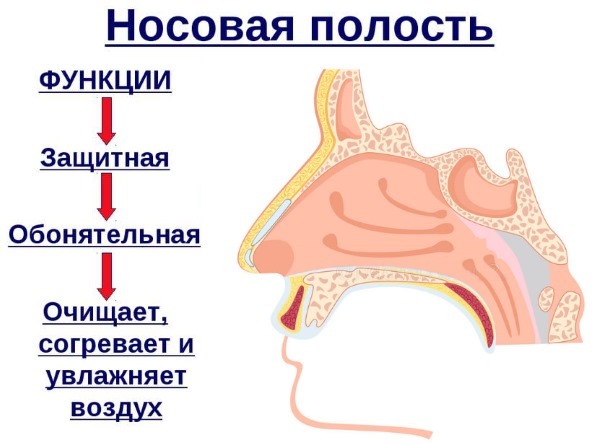
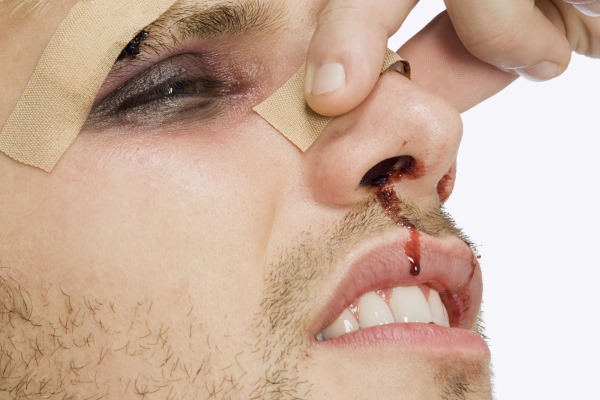
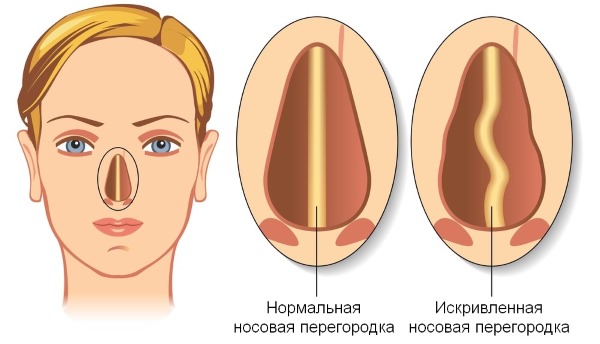
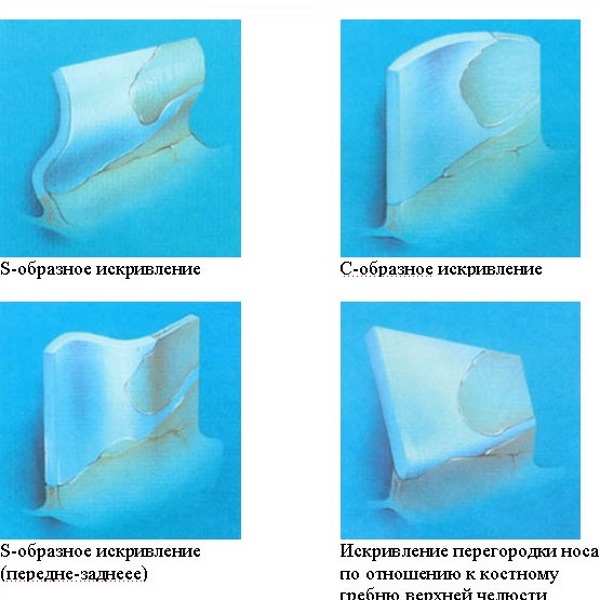

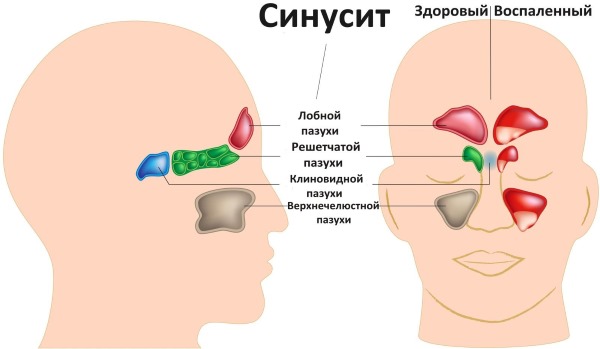

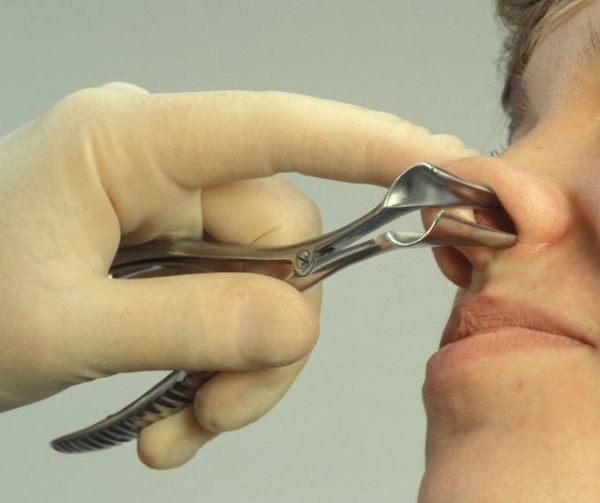
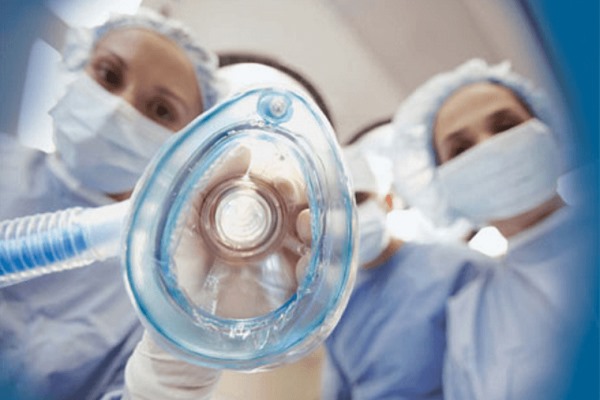
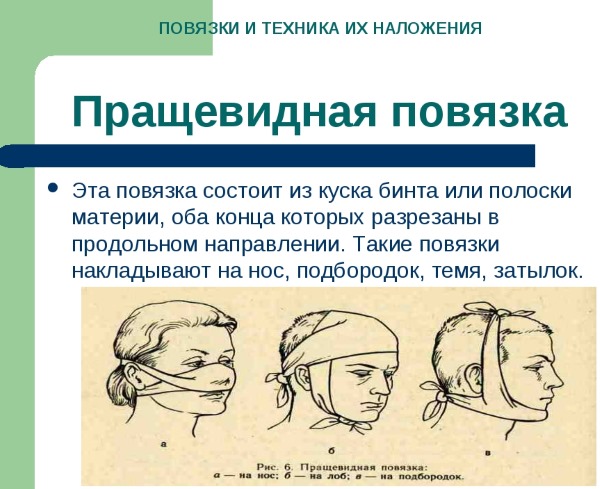
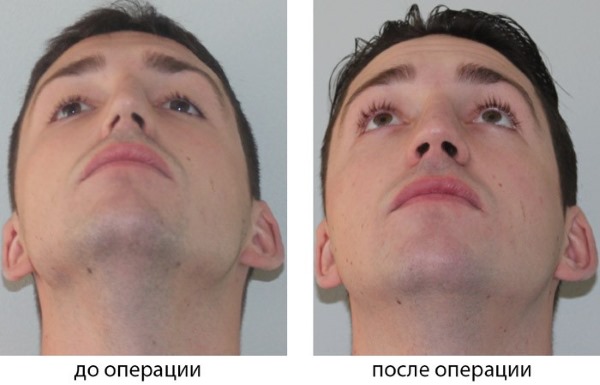
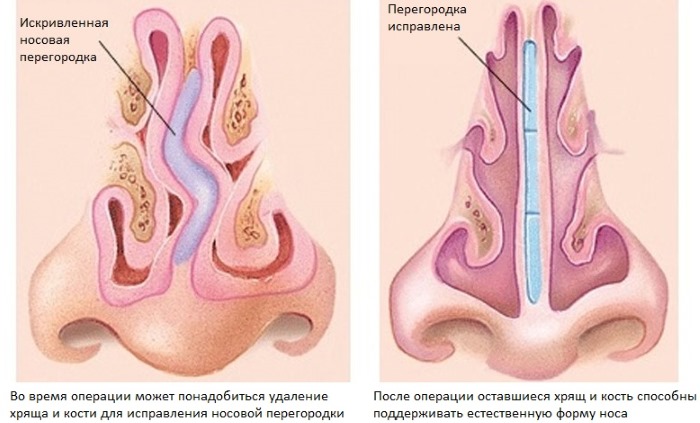
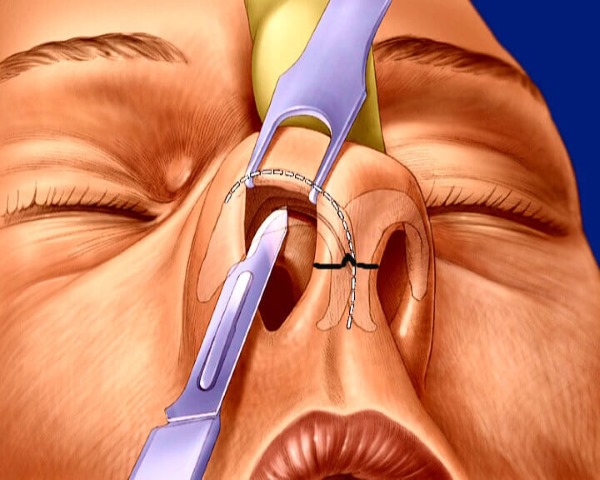
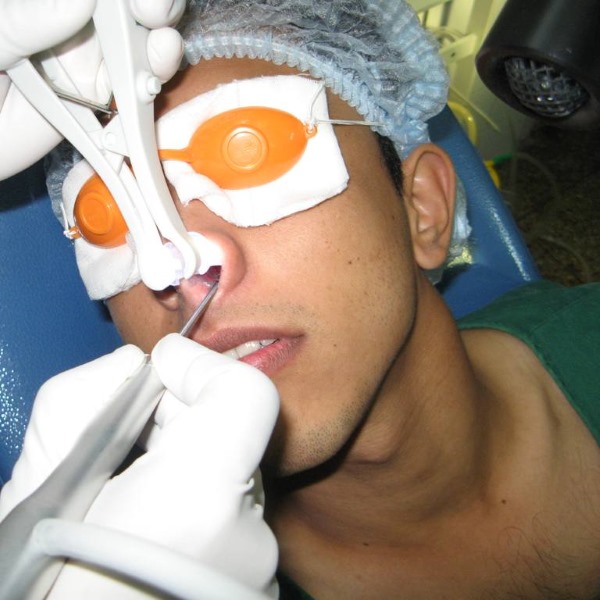
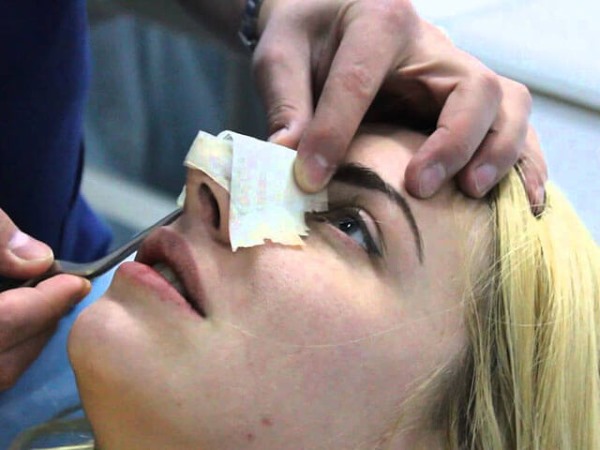


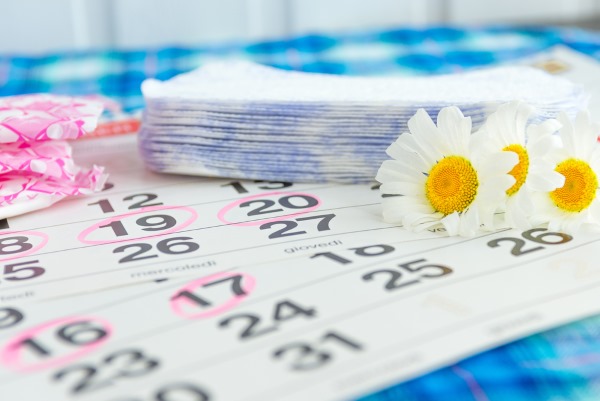

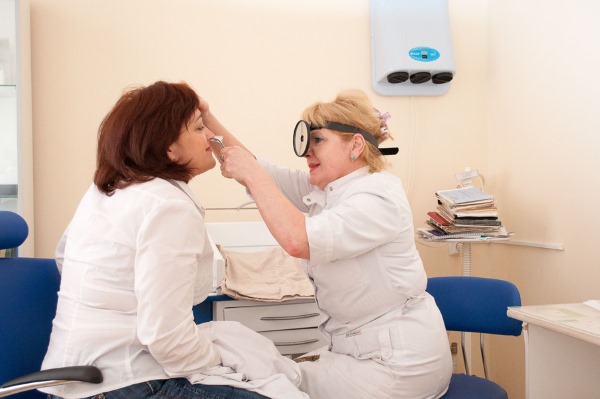
I have a slight deviation of the nasal septum after a fight in the ring. This does not greatly affect my life, but I am thinking about how to fix it. If you look closely, the nose is crooked, and I snore at night. Judging by the description, I will probably focus on laser plastic.